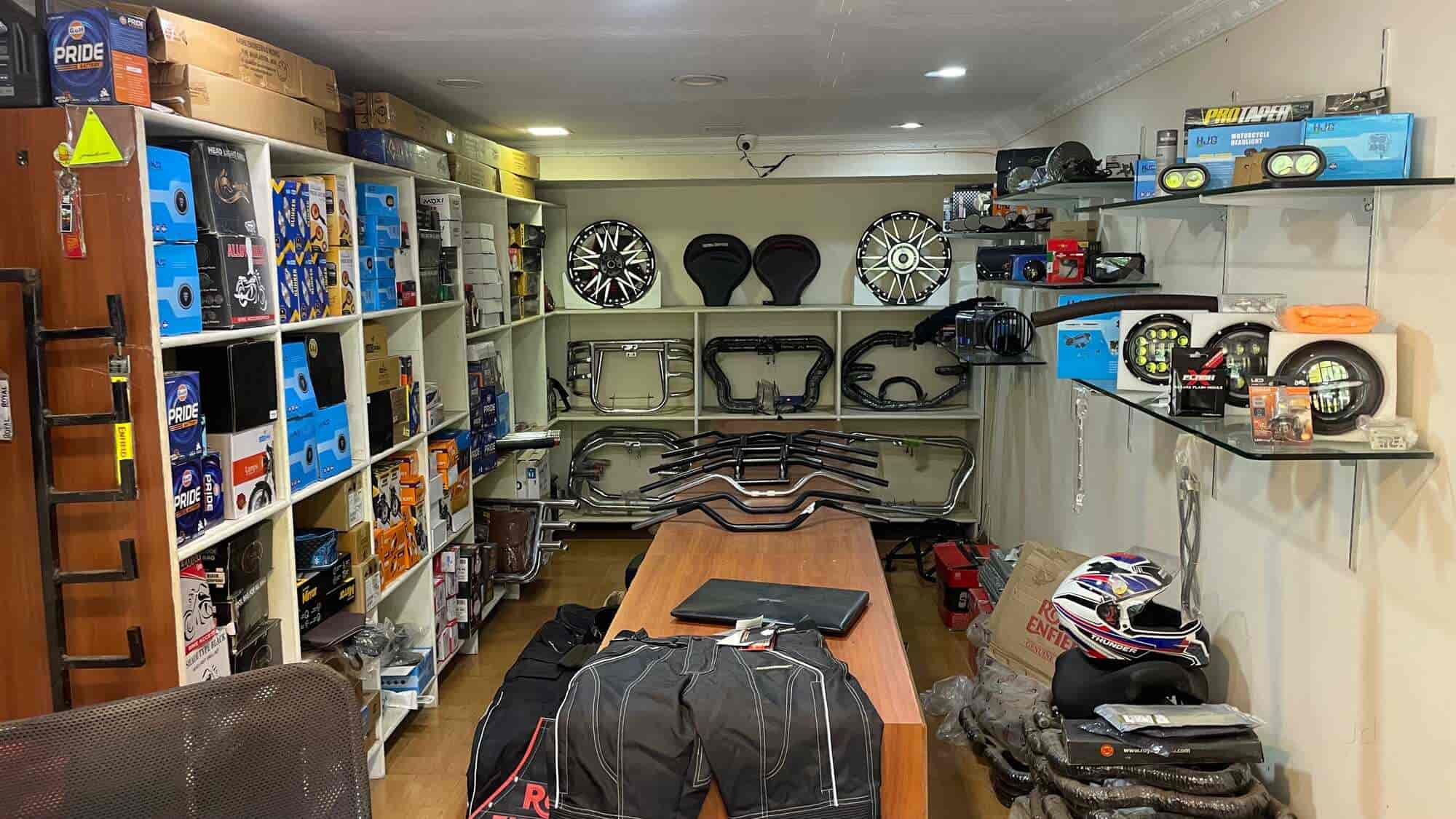A Detailed Check Out Motorcycle Components: What Every Rider Needs To Know
A detailed understanding of motorcycle parts is not merely helpful yet important for any rider intending to take full advantage of performance and safety. Each part, from the engine's complex workings to the integrity of brake systems, plays a pivotal role in the total experience and performance of the bike. Past just understanding what these components do, it is crucial to value exactly how they sustain and connect one an additional. This interconnectedness can make the distinction between a smooth trip and unexpected complications. What details exist within this mechanical harmony that every rider should understand?
Recognizing the Engine
The engine, commonly regarded as the heart of a bike, is an intricate assembly of elements that operate in consistency to transform fuel into motion. At its core, the engine's main feature involves the burning process, where air and fuel mix and stir up within the cyndrical tubes, leading to regulated explosions that drive the pistons. These pistons go up and down, converting chemical energy right into mechanical power, which ultimately turns the crankshaft, eventually powering the bike.

Recognizing the complexities of a motorcycle engine is critical for fanatics and cyclists alike. It not only provides understanding into how motorbikes achieve their excellent power and speed yet likewise help in efficient upkeep and troubleshooting, guaranteeing long life and reliability on the road.
Suspension Systems
While the engine powers the motorbike, the shock absorber plays a vital duty in ensuring a regulated and smooth adventure. The suspension system is in charge of taking in shocks from the roadway surface, preserving tire call, and providing security during cornering and stopping. It comprises 2 main parts: the front forks and the rear shock absorbers.
Front forks are typically telescopic, having a springtime and moistening device. The spring presses and expands to soak up bumps, while the wetting system controls the activity to avoid extreme bouncing. This combination makes sure the front wheel remains touching the road, supplying premium handling and comfort.
The back suspension, usually a monoshock or twin-shock arrangement, functions in a similar way to the front suspension yet is customized to sustain the motorcycle's weight and motorcyclist - motorcycle parts nz. It handles rear wheel motion, adding to the bike's general balance and responsiveness
Shock absorber can be flexible, permitting cyclists to make improvements preload, compression, and rebound settings according to personal choices and riding problems. This adjustability boosts performance by optimizing the motorbike's interaction with varied terrains. In recap, an effective shock absorber is critical for cyclist comfort, safety and security, and the motorbike's managing expertise.
Brake Components
Quiting power is a basic element of bike safety and security, and it pivots on the efficiency of the brake parts. The primary elements of a motorcycle's braking system include the brake pads, calipers, blades, and master cyndrical tube. mx gear nz. Each of these elements plays a critical function in ensuring reliable stopping performance
Brake pads are crucial as they produce the necessary rubbing versus the blades to reduce down or quit the bike. Constructed from products such as sintered metal or natural compounds, the choice of brake pad material substantially impacts performance and long life. Calipers, real estate the brake pads, apply stress to the pads when the brake lever is involved, facilitating call with the rotors.
The blades, usually made from stainless-steel or cast iron, are mounted to the wheels and function as the surface against which the brake pads press. Their style, consisting of diameter and thickness, influences warmth dissipation and stopping power. The master cylinder, linked to the brake bar, produces hydraulic stress sent through brake lines to the calipers, making sure regular braking pressure.
Regular maintenance and examination of these components are important for optimal efficiency, preventing wear and guaranteeing motorcyclist safety and security when driving.
Tire Fundamentals
Beyond maintaining durable stopping systems, click here to read guaranteeing ideal tire efficiency is similarly significant for bike safety and security and performance. Tires are the single call point between the bike and the roadway, making their problem essential in handling, security, and overall ride quality.

In addition, consider the tire's age. Rubber substances break down with time, even if tread shows up adequate. Inspect the sidewall for the DOT (Department of Transport) code to ascertain the tire's age. Commonly, replacement is recommended every five years, no matter of wear. Spending attention in these tire fundamentals not only optimizes efficiency however likewise dramatically boosts riding safety and security.
Electrical Solutions
In the realm of motorbike maintenance, the electric system plays a critical duty in ensuring trustworthy performance and rider safety and security. This detailed network encompasses essential elements such as the battery, alternator, starter electric motor, and wiring harness. Each aspect is essential for the seamless procedure of the motorbike, from ignition to illumination and interaction motorcycle tie down straps with numerous sensing units.
The battery works as the heart of the electrical system, supplying the needed power to start the engine and operate devices. Regularly checking the battery's voltage and terminals for corrosion is crucial to stop unanticipated failures. The generator, on the other hand, recharges the battery while the engine is running, making certain a continuous power supply.
The starter electric motor is in charge of initiating engine procedure, transforming electrical power into mechanical power. To keep it, bikers should take note of any type of uncommon noises or difficulties during start-up. On the other hand, the wiring harness acts as the lorry's nervous system, linking all electric components. Guaranteeing that the cables are undamaged and totally free next page from damages is important for protecting against brief circuits and ensuring performance.
Final Thought

Stopping power is an essential facet of motorbike safety and security, and it hinges on the efficiency of the brake parts. The key components of a motorcycle's braking system consist of the brake pads, calipers, rotors, and master cyndrical tube.Brake pads are important as they develop the required rubbing against the rotors to reduce down or stop the bike.Beyond maintaining robust braking systems, making sure optimal tire performance is just as significant for motorcycle safety and efficiency.In the realm of bike upkeep, the electrical system plays an important duty in guaranteeing reliable efficiency and rider security.